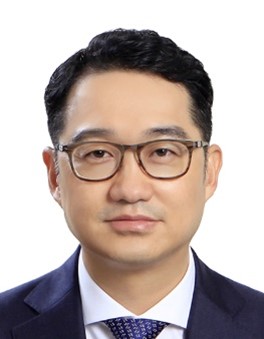Yong-Young Noh
TFTs for Display
Department of Chemical Engineering, Pohang University of Science and Technology (POSTECH
Email: yynoh@postech.ac.kr
Biography
Prof. Yong-Young Noh is Chair Professor of Department of Chemical Engineering, Pohang University of Science and Technology (POSTECH). He received Ph.D. in 2005 from GIST and then worked at the Cavendish Laboratory in Cambridge, UK, as a postdoctoral associate. Afterwards, he worked at ETRI, as a senior researcher, at Hanbat National University as Assistant professor, and Dongguk University as Associate professor. His research interest is the field of developing printable semiconductors including halide perovskite, 2D layered materials, organic, carbon nanotubes, metal halide and metal oxide for field-effect transistors, photodiodes and light-emitting diodes. Based on his achievement, he got many honourable awards including IEEE George E. Smith Award (2014), Korea President Award (2014), KIDS Gold Award (2018), and UDC Pioneer Award (2022). He has published 369 WOS papers (>18 959 cites, h factor =69).
Abstract for Presentation
Development of high-performance perovskite thin-film transistors
In this talk, I would like to introduce a general overview and recent progress of our group of p-type metal halide and perovskite semiconductors for application of hole transport layer in light-emitting diodes and field-effect transistors (FETs). At the first part of the seminar, wide band gap p-type semiconductors, copper iodide (CuI) will be introduced. I will mainly address the electrical properties, band structure, and doping of those materials. As transparent p-type semiconductors, I provide our results for CuI and doped CuI which exhibited impressive hole mobility over 5 cm2/Vs and high transparency in visible region. In addition, the main challenges for commercialization will be discussed. After then, I will talk about the tin based 2D and 3D perovskite semiconductor as promising p-type halides. I will introduce inorganic perovskite thin-film transistors with exceptional performance using high-crystallinity and uniform cesium-tin-triiodide-based semiconducting layers with moderate hole concentrations and superior Hall mobilities, which are enabled by the judicious engineering of film composition and crystallization. The optimized devices exhibit high field-effect hole mobilities of over 50 square centimeters per voltage-second and large current modulation greater than 108, as well as high operational stability and reproducibility [1].
References
[1] Ao Liu, Yong-Young Noh et al, Nature Electronics, 5 (2), 78-83.
WELCOME TO CHINA TO ATTEND THE ICANS
23-26 August, Nanjing, China
Connect with us:



